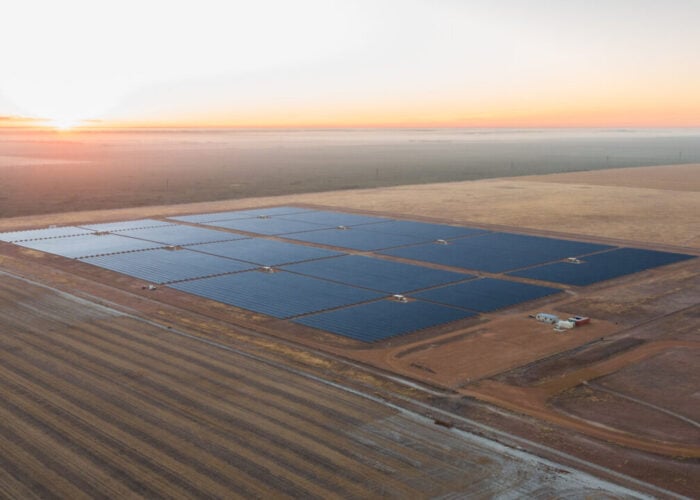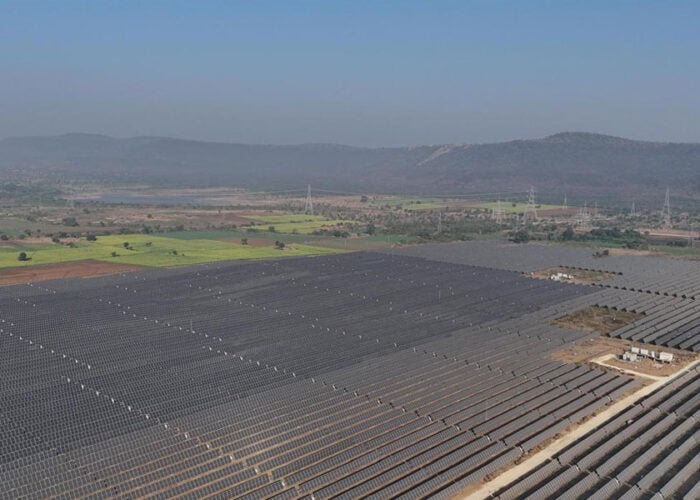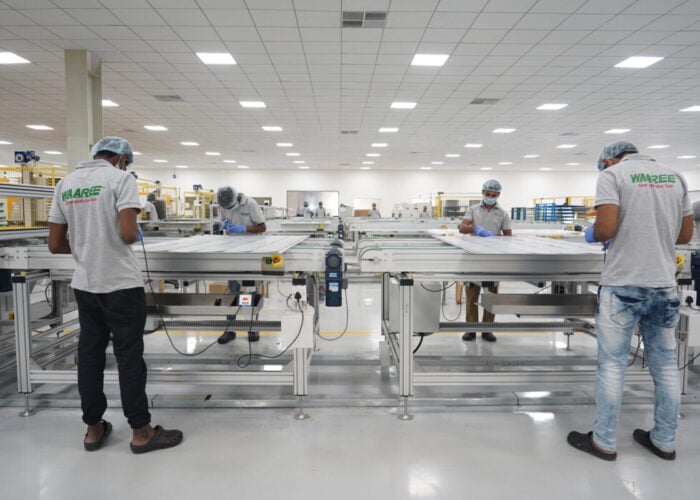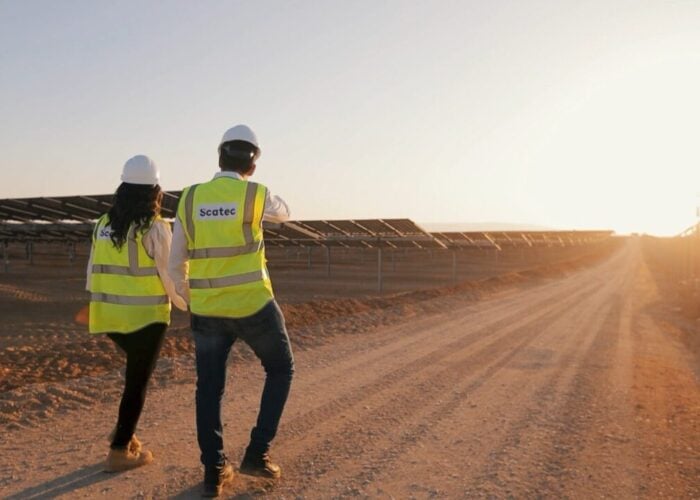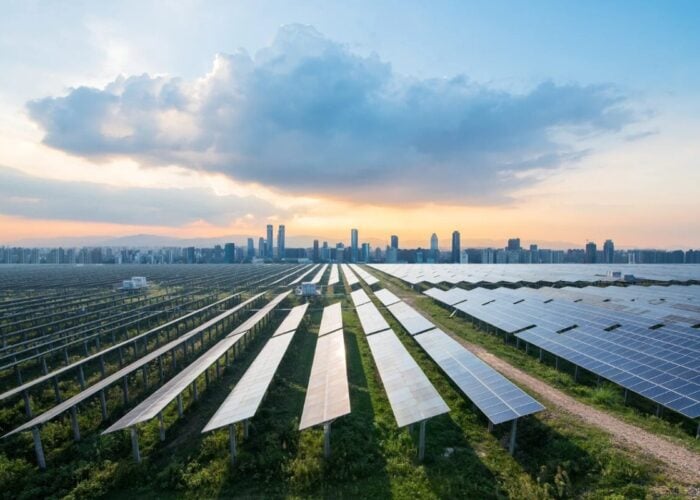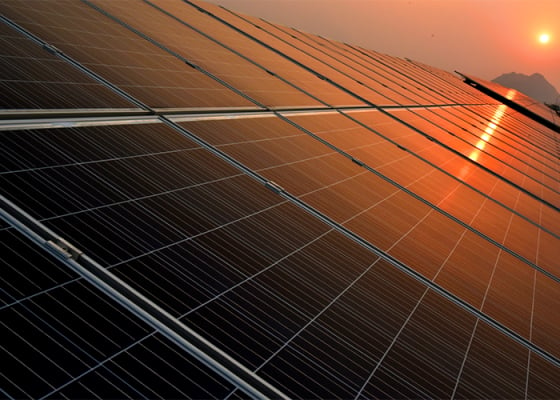
A 1.2GW hybrid tender in India coupling pumped hydro, batteries, solar and wind power has achieved tariffs that are highly competitive against coal power, according to prominent industry figures.
While the procurer, Solar Energy Corporation of India (SECI), cannot reveal the exact tariffs until they are approved by the board of directors, Sanjay Sharma, general manager at SECI, confirmed to PV Tech that the prices are “attractive” when compared to thermal power.
Try Premium for just $1
- Full premium access for the first month at only $1
- Converts to an annual rate after 30 days unless cancelled
- Cancel anytime during the trial period
Premium Benefits
- Expert industry analysis and interviews
- Digital access to PV Tech Power journal
- Exclusive event discounts
Or get the full Premium subscription right away
Or continue reading this article for free
Meanwhile, Pranav Mehta, chairman of the National Solar Energy Federation of India (NSEFI), said in a release that with the winning tariffs from this tender “thermal power in India has become priced out”.
Issued by SECI last August, this first-of-its-kind pan-India tender requested a firm power supply of 600MW for 6 hours per day during the peak demand hours of 5.30-9.30AM and 5.30PM-00.30AM, on a day-ahead on-demand basis. Storage capacity of at least 3,000MWh would also be needed to achieve these firm power requirements.
The 1.2GW procurement, described as the world’s largest firm-supply tender for renewable energy and storage, was oversubscribed by 420MW. The tariff results revealed by the NSEFI release – with winners including GIC and Abu Dhabi Investment Authority (ADIA)-backed Greenko Group and Goldman Sachs-backed ReNew Power – were as follows:
| Developer | Capacity (MW) | Peak tariff (INR/kWh) | Off-Peak tariif (INR/kWh) | Weighted average tariff |
|---|---|---|---|---|
| Greenko | 900 | 6.12 (US$0.086) | 2.88 (US$0.040) | 4.04 (US$0.057) |
| ReNew Power | 300 | 6.85 (US$0.096) | 2.88 (US$0.040) | 4.30 (US$0.060) |
Sanjay Sharma expressed confidence that SECI would easily find prospective buyers for the power produced from these capacities. SECI also plans to release similar firm power renewable energy tenders based on the load curve and interest from the various Indian states, but it would wait to see how the implementation of the current tender pans out before taking a future course of action, he added.
Pricing out coal
With Greenko’s weighted average tariff of INR 4.04 (US$5.61 cents)/kWh for 900MW of capacity, distribution companies (Discoms) may finally begin to welcome the prospect of energy storage with solar and wind in India.
“The most recent thermal power tenders in the country have resulted in levelised tariffs in the range of INR 5-7/kWh at 85% annual PLF (US$6.94-9.72 cents/kWh),” said NSEFI chairman Pranav Mehta. “The peak tariff under this SECI tender is highly competitive vis-à-vis the recent peak tariffs in international markets like USA (INR 8-9/kWh, or US$11.11-12.50 cents/kWh).”
The tariffs are also lower than a recent stressed thermal projects tender conducted by Indian power trader PTC. This second tender drew a tariff of INR 4.24 (US$5.89 cents)/kWh for only three years' supply, as opposed to the 25-year fixed tariffs of SECI’s tender.
The results of SECI's tender drew great interest on social media when they emerged in recent days. Kartik Gulati, a senior executive at ReNew Power, tweeted: “Clean energy coupled with energy storage is the ultimate answer to coal, which continues to dominate the power sector because of the intermittency of solar and wind.”
However, while Vinay Rustagi, managing director of consultancy firm Bridge to India, told PV Tech that the “result of the first mega storage tender is a key milestone for the Indian renewable sector”, he warned that “it remains to be seen if the distribution utilities are willing to pay the quoted price for peak power”.
Discom double
Nonetheless, the procurement represents a double win for Discoms in other areas since they would not only benefit from the assurance of firm power – which to date had been missing from the renewable energy proposition – but also from significant chipping away at their RPPO (renewable power purchase obligation) mandates.
Connected with the Interstate Transmission System (ISTS), the renewable power from these projects will be firm and predictable for 25 years and will meet the peak requirements of the Discoms, which otherwise have to depend on spot markets without price, supply or network assurance, and are prepaid, said the NSEFI release. With the peak time-of-day (TOD) tariffs becoming more and more pronounced in India, these discovered tariffs will be value accretive for Discoms, and are already much lower than the ever-increasing commercial & industrial consumer tariffs in India, the federation added.
In terms of RPPOs, the Indian government has mandated all Discoms to purchase at least 21% of their total energy requirements from renewable sources by the fiscal year 2021-22. This new renewables-plus-storage capacity will not only contribute to those mandates, but it will also alleviate Discoms from having to bear the burden of transmission charges and losses on this renewable power.
Having stumbled at the start line for large-scale storage, with a number of failed utility-scale solar and storage tenders in the second half of the last decade, India has now made a huge stride in this market.
Dr Rahul Walawalkar, president of the India Energy Storage Alliance (IESA) recently told PV Tech’s sister site Energy-Storage.news that renewables-plus-storage hybrid projects are now considered a viable alternative to peaker plants on the grid.
The government's plan to retire old, inefficient thermal plants will be achieved through such renewable-storage hybrid projects, Dr Walawalkar said, “thus providing a boost for efforts for cleaner air,” as well as the overall push towards renewable energy.
India’s latest Union budget saw allocation of INR 220 billion (US$3 billion) to the renewables sector in direct support.

